- About MAA
- Membership
- MAA Publications
- Periodicals
- Blogs
- MAA Book Series
- MAA Press (an imprint of the AMS)
- MAA Notes
- MAA Reviews
- Mathematical Communication
- Information for Libraries
- Author Resources
- Advertise with MAA
- Meetings
- Competitions
- Programs
- Communities
- MAA Sections
- SIGMAA
- MAA Connect
- Students
- MAA Awards
- Awards Booklets
- Writing Awards
- Teaching Awards
- Service Awards
- Research Awards
- Lecture Awards
- Putnam Competition Individual and Team Winners
- D. E. Shaw Group AMC 8 Awards & Certificates
- Maryam Mirzakhani AMC 10 A Awards & Certificates
- Two Sigma AMC 10 B Awards & Certificates
- Jane Street AMC 12 A Awards & Certificates
- Akamai AMC 12 B Awards & Certificates
- High School Teachers
- News
You are here
Mathematical Treasure: Émilie du Châtelet’s Principes Mathématiques
Émilie du Châtelet, born Gabrielle-Émilie Le Tonnelier de Breteuil, married to the Marquise du Chastellet, and mistress of Voltaire, was a mathematician and scientist in France during the Enlightenment. The following image is the title page of volume 1 of Émilie du Châtelet’s Principes Mathématiques de la Philosophie Naturelle, a two-volume translation and commentary of Newton’s Principia, published in 1759 in French in Paris. It is considered her greatest achievement. The complete work appeared ten years after her death, and it still is the only complete French translation available. According to the Dictionary of Scientific Biography, “her work contributed to the great progress made by Newtonian science in the middle of the eighteenth century.”
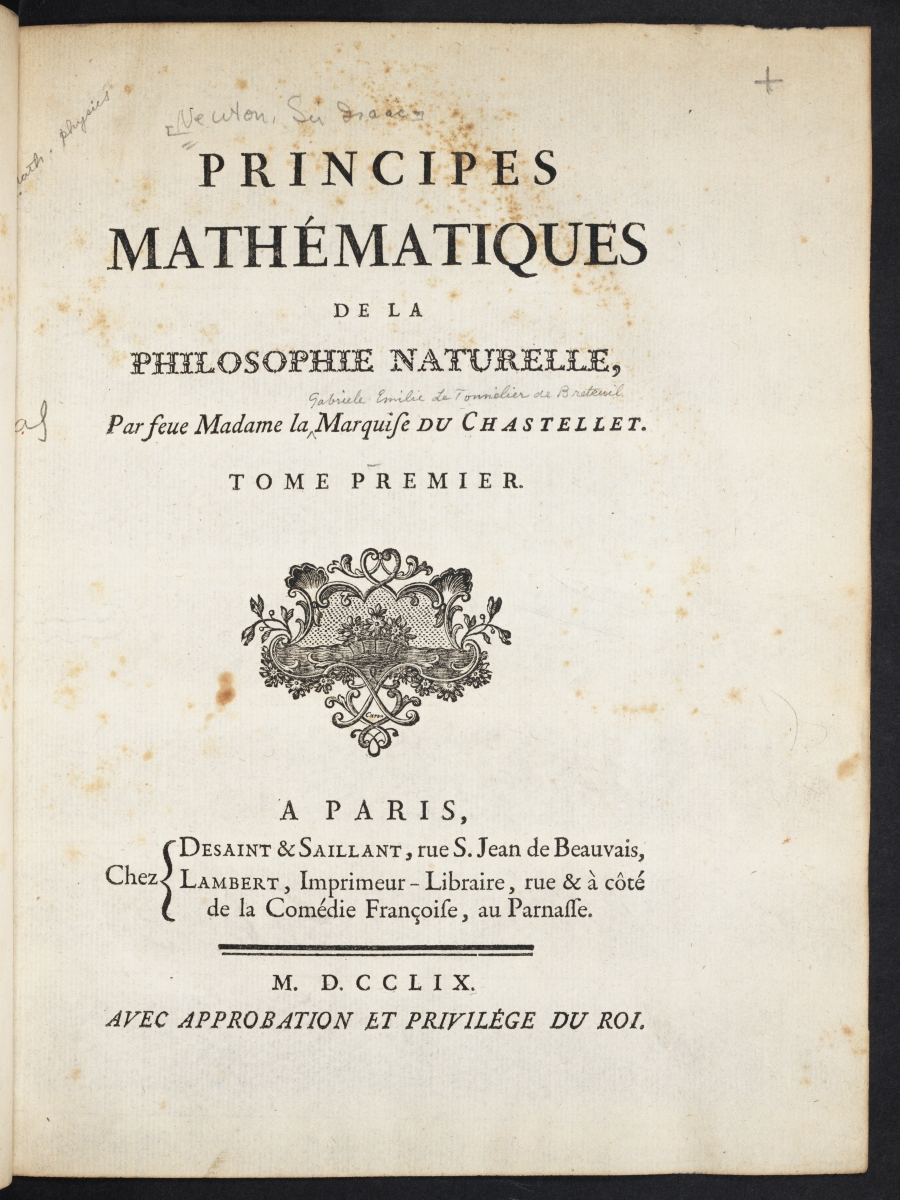
Page one of volume 1 begins with Definitions.
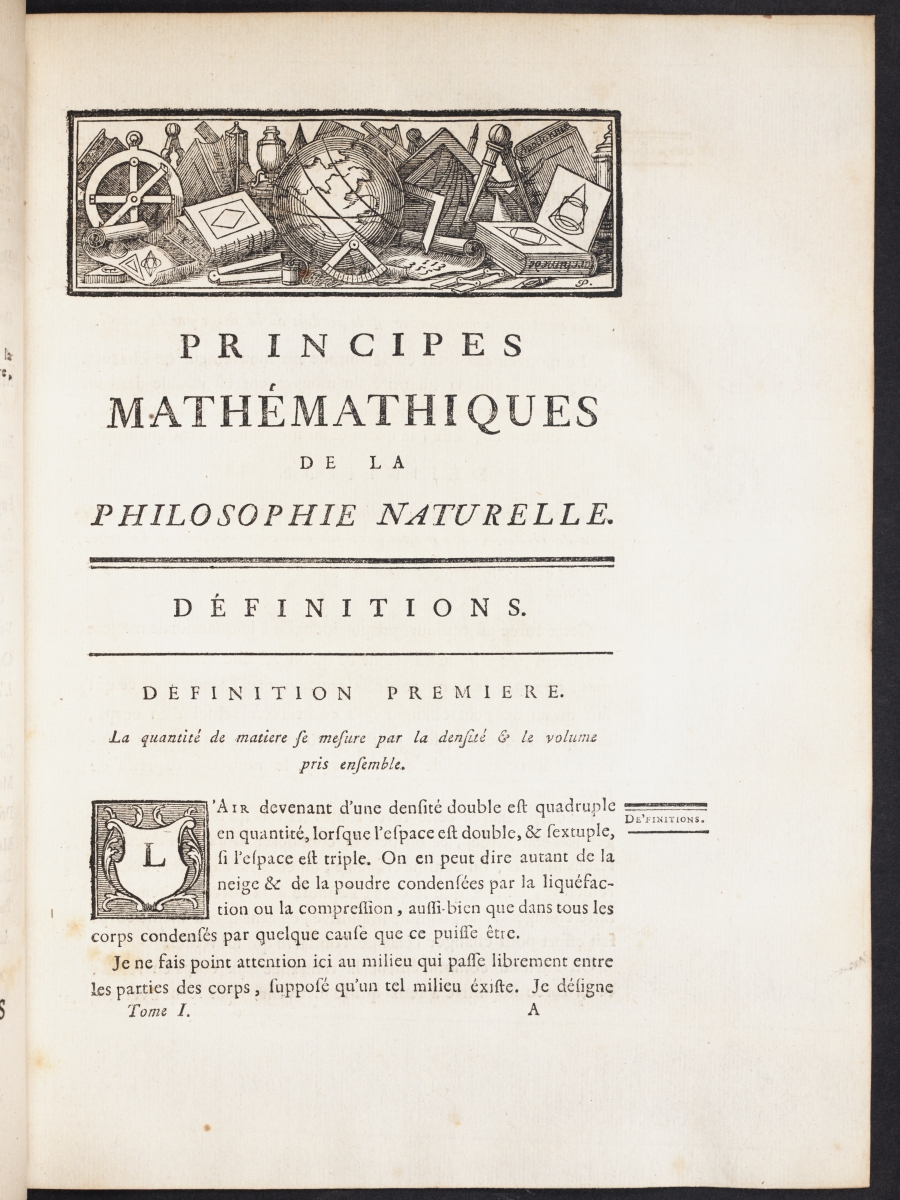
Lemma 1 (page 37) is related to the notion of a limit and roughly translated states that if two quantities are tending towards being equal in such a way that their difference can be found to be less than any given difference, then the quantities are equal.
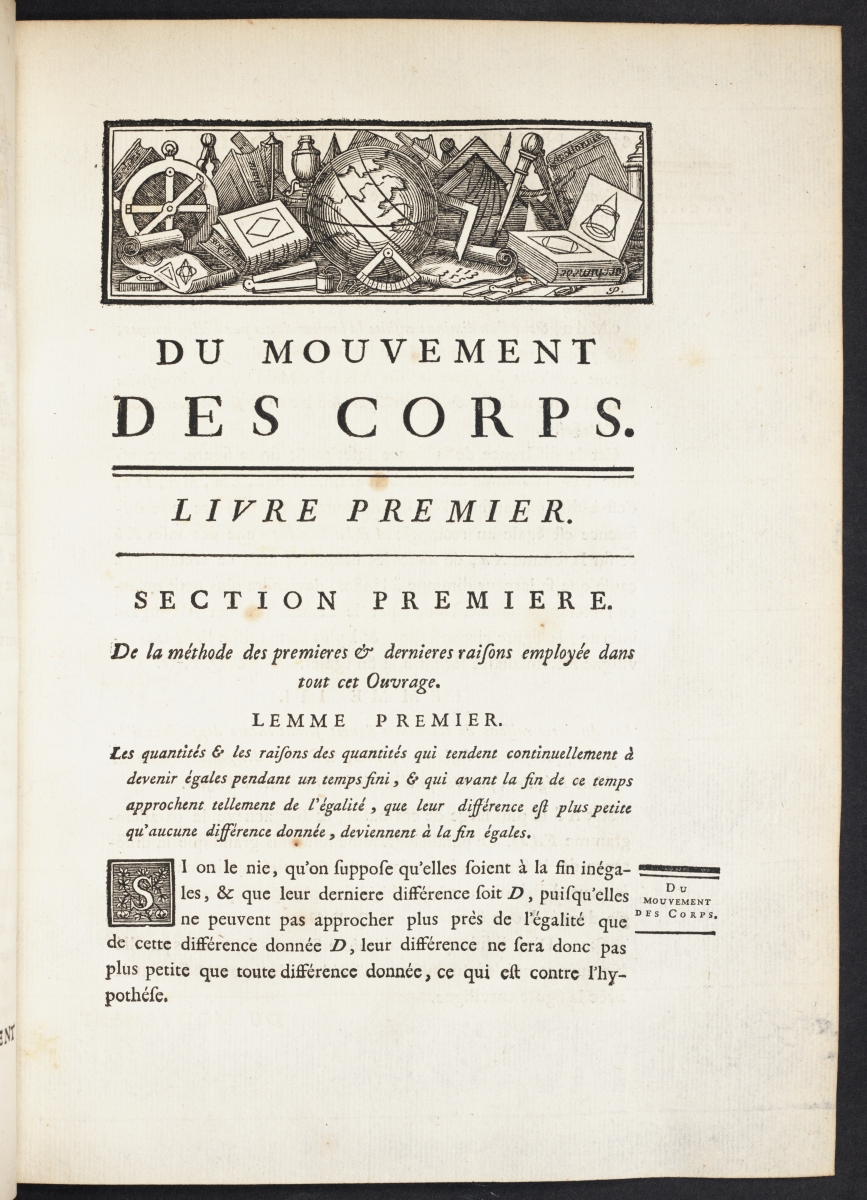
This is followed by Lemma 2 (page 38 and Figure 6 on a foldout after page 82), using inscribed and circumscribed parallelograms (rectangles) to find the area under a curve.
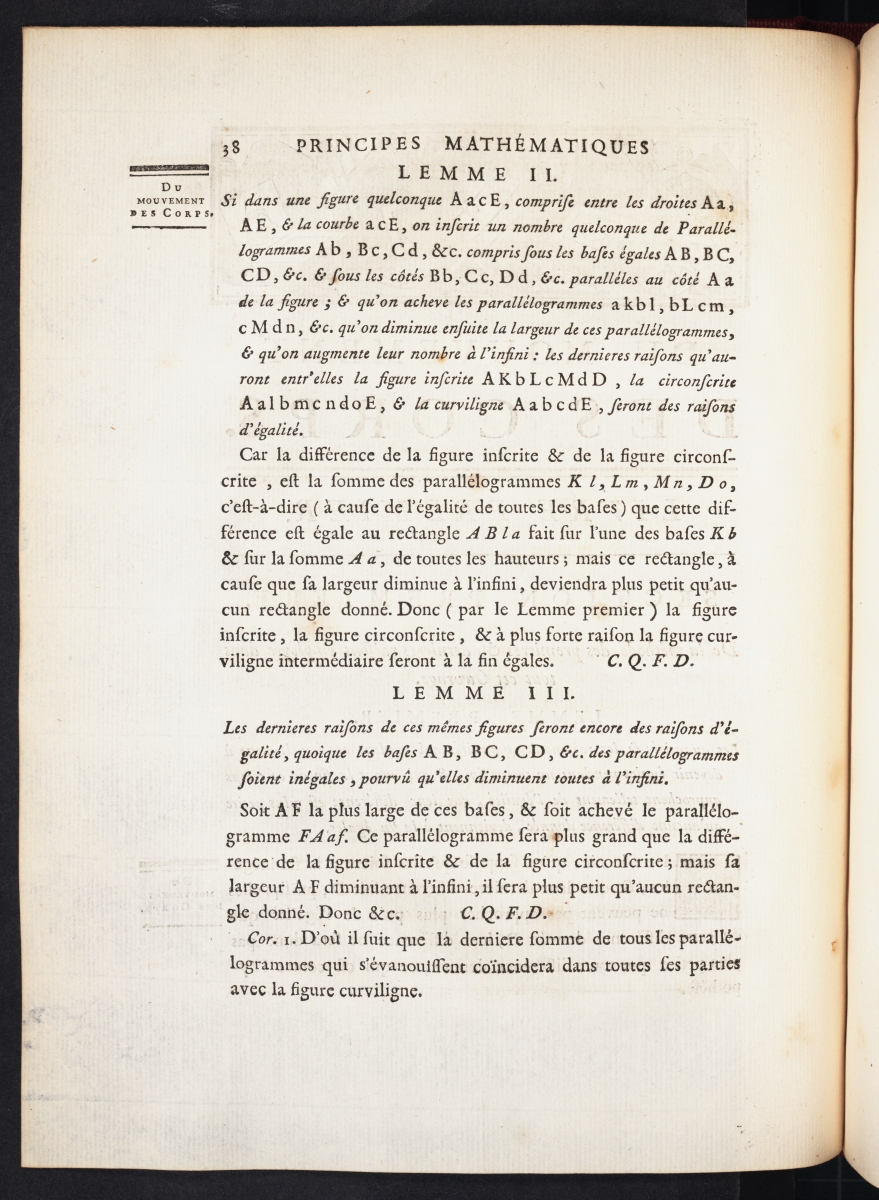

Du Châtelet used Leibniz’s notation for differentials and integrals as demonstrated on page 129 of Volume 2.
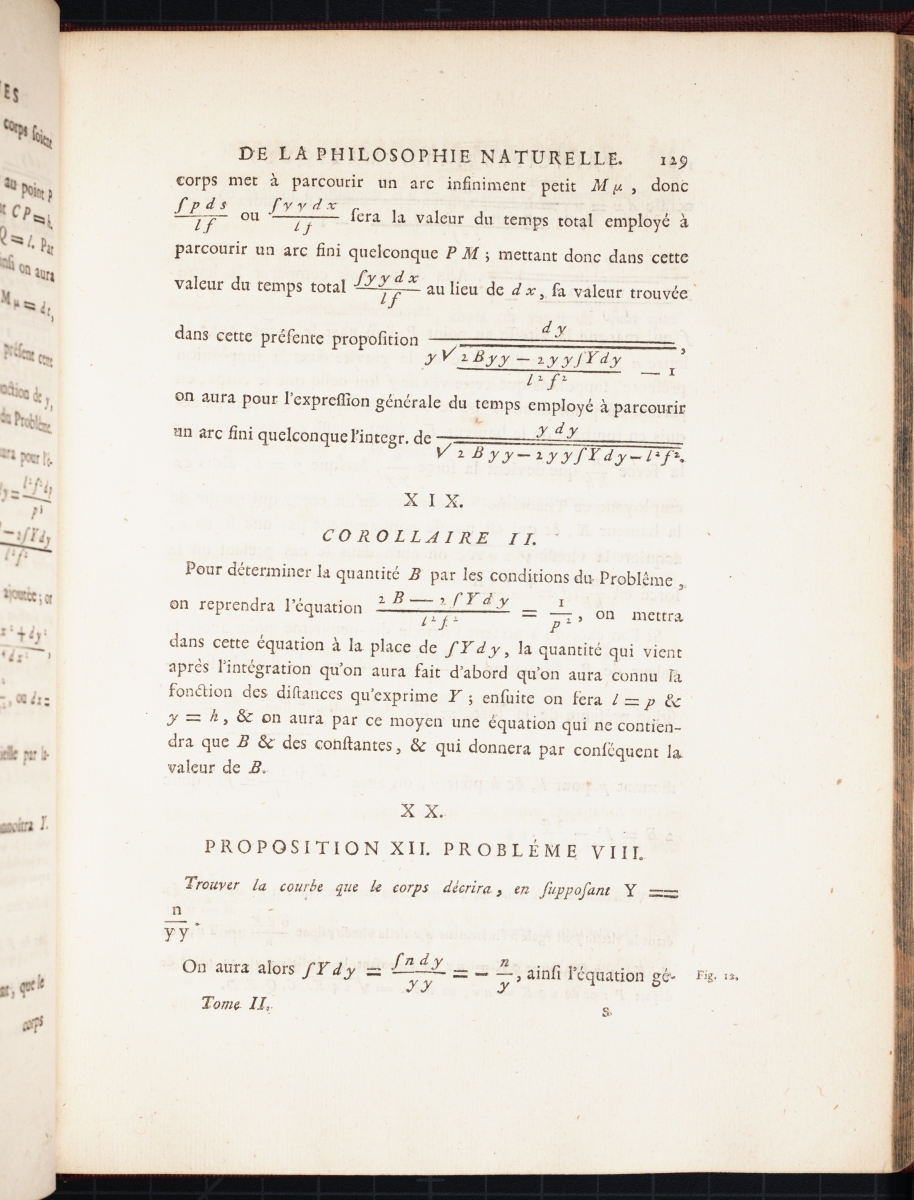
Complete digital scans of Principes Mathématiques de la Philosophie Naturelle, Volume 1 and Volume 2, are available in the Linda Hall Library Digital Collections. The call number is QA803.A53 1759. For a portrait of Émilie du Châtelet, visit the Francesco Algarotti page Mathematical Treasures.
Several books have been written about the life of Émilie du Châtelet, including Passionate Minds: The great love affair of the Enlightenment, featuring the scientist Emilie du Châtelet, the poet Voltaire, sword fights, book burnings, assorted kings, seditious verse, and the birth of the modern world by David Bodanis, which reads like a novel and contains many details gleaned from letters written by Emilie and Voltaire and their acquaintances. According to Bodanis, “her translation and commentary on Newton’s Principia became fundamental to key eighteenth-century developments in theoretical physics, laying the groundwork for much of contemporary science. … More technical aspects of her work played a great role in energizing the French school of theoretical physics, associated with Lagrange and Laplace." (pp. 281, 283)
Images in this article are courtesy of the Linda Hall Library of Science, Engineering & Technology and used with permission. The Linda Hall Library makes available all existing digital images from its collection that are in the public domain to be used for any purpose under the terms of a Creative Commons License CC by 4.0. The Library’s preferred credit line for all use is: “Courtesy of The Linda Hall Library of Science, Engineering & Technology.”
References
Bodanis, David. Passionate Minds: The great love affair of the Enlightenment, featuring the scientist Emilie du Châtelet, the poet Voltaire, sword fights, book burnings, assorted kings, seditious verse, and the birth of the modern world. Crown Publishers, 2006.
O'Connor, J. J., and E. F. Robertson. “Gabrielle Émilie Le Tonnelier de Breteuil Marquise du Châtelet.” MacTutor History of Mathematics Archive. http://www-history.mcs.st-and.ac.uk/Biographies/Chatelet.html.
Taton, René. “Châtelet, Gabrielle-Émilie Le Tonnelier de Breteuil, Marquise du.” In Dictionary of Scientific Biography, edited by C. C. Gillespie, iii:215–217. New York: Scribner, 1972.
Cynthia J. Huffman (Pittsburg State University), "Mathematical Treasure: Émilie du Châtelet’s Principes Mathématiques," Convergence (January 2017)




